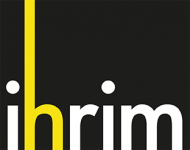The research project PaLaFra, founded by the French ANR and German DFG, has the aim of providing a documentation and the possibility to study the transition from Late Latin to Old French in a diachronic perspective. Therefore three teams from the University of Lille, ENS de Lyon and University of Regensburg and Tübingen created the two digital tagged diachronic subcorpora PALAFRAFRO-V2-1 and PALAFRALAT-V2 (access via TXM).
It is well known that the comparative grammar of Romance languages does not allow us to trace the way back to Late Latin. There is a kind of no man’s land between Late Latin and the language stage which can be reached by means of the method of reconstruction. As has been shown by Banniard, this gap is conceptual rather than chronological, because Late Latin and the vernacular coexist in the same communicative space, and while they begin as two varieties on the same linguistic continuum – the proportion of conservative and innovative features varying according to the register (e.g. sermo altus, stylus simplex) – this continuity is later disrupted as the vernacular becomes identifiable as an autonomous linguistic system.
This project will contribute to our understanding of the relationship between Late Latin and one of the Romance languages, French, in the complex evolution from a lingua mixta to diglossic variants. It will initiate a collaboration between the scientific community of Latin linguistic community and researchers in French historical linguistics.
The three partners in this project will have the following role:
- The German team (Regensburg/Tübingen) will provide general expertise on Late Latin as well as a methodology developed to reconstruct Romance innovations. On the basis of the Monumenta Historica Germaniae, it will set up a Late Latin corpus, which will be digitized, annotated and lemmatized morphosyntactically. It will also enrich this corpus with pragmatic-discursive annotations and mark-up.
- The Lyon team will bring its strong expertise in the field of digital corpora for the medieval period. It will enrich the Medieval French Corpus (Base de Français Médiéval), in particular by introducing lemmatization. It will also combine the Late Latin corpus and the Medieval French corpus into one Latin-French corpus, that will freely accessible for research and maintained in the long term. Moreover, the team will develop a corpus of aligned translations for Late Latin and the corresponding Old French texts, which will be a valuable tool for studying the relationship between Late Latin and Old French in a precise manner.
- The task of the Lille partner is to coordinate linguistic research on the bilingual corpus in order to describe and to analyze the relationship between Late Latin and Old French. She will produce a multi-author reference book that will serve as a framework for future research on the issue. Researchers using the Latin-French corpus will also evaluate the user-friendliness of the corpus and the appropriateness of the choice of texts and annotations, giving feedback to the German and Lyon teams in order to optimize the development of the corpus.







